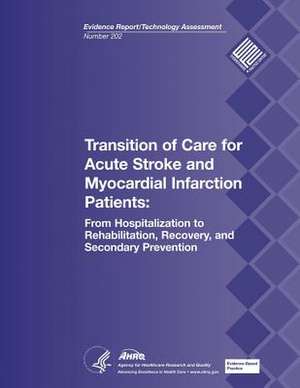Transition of Care for Acute Stroke and Myocardial Infarction Patients
Autor U. S. Department of Heal Human Services, Agency for Healthcare Resea And Qualityen Limba Engleză Paperback
Preț: 161.71 lei
Preț vechi: 170.23 lei
-5% Nou
Puncte Express: 243
Preț estimativ în valută:
30.95€ • 33.63$ • 26.02£
30.95€ • 33.63$ • 26.02£
Carte disponibilă
Livrare economică 31 martie-14 aprilie
Preluare comenzi: 021 569.72.76
Specificații
ISBN-13: 9781484077580
ISBN-10: 148407758X
Pagini: 204
Dimensiuni: 216 x 280 x 11 mm
Greutate: 0.49 kg
Editura: CREATESPACE
ISBN-10: 148407758X
Pagini: 204
Dimensiuni: 216 x 280 x 11 mm
Greutate: 0.49 kg
Editura: CREATESPACE
